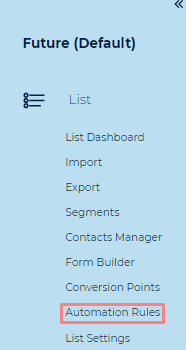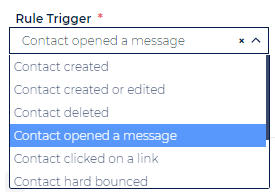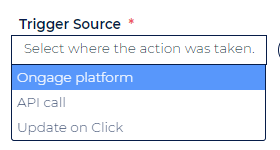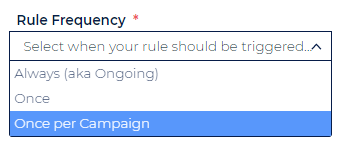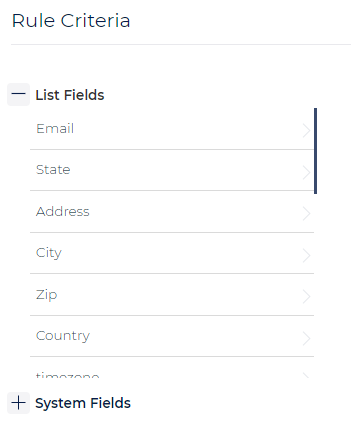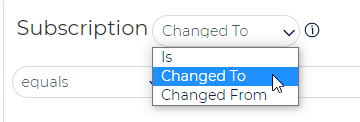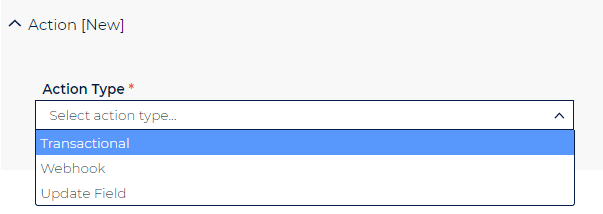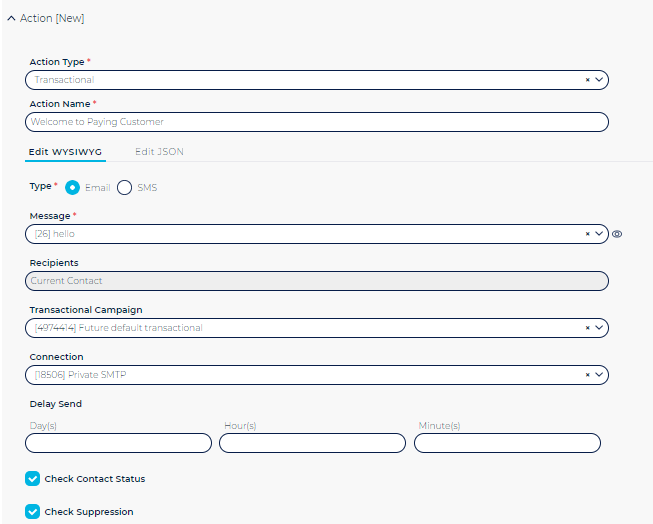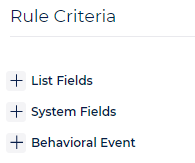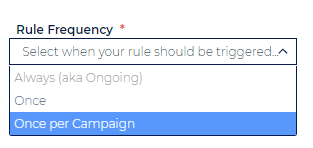Automation Rules
Table of Contents:
Intro
What are Automation Rules
- Automation Rules opens up for Ongage marketers a whole new set of triggers to act on and respond to in real-time!
- Automation Rules are designed as a major enhancement to Ongage's current Events & Triggers which serves for drip campaigns and basic automation.
Here are a few new things marketers can do with Automation Rules:
- Send a transactional message (email or sms) when the values of a list field (AKA data point) changes. For example, the field subscription changes from registered to paying.
- Send a transactional message, immediate or delayed, after an Open or Click in some given campaign or trigger.
- Update a list field. For example: If a contact reg_status list field changed to 'registered' – you can update another list field, let's say 'reg_date' with the current date (using the Ongage system function: {{ocx_now}}).
- Send an outbound Webhook to an endpoint of yours, for updating your CRM/Data Warehouse/Back-end/BI system in real-time.
Permissions Access to AR
![]() Note: Only General Users and Admins have access to this feature. For more about User Roles and Access Permissions see User Management.
Note: Only General Users and Admins have access to this feature. For more about User Roles and Access Permissions see User Management.
Subsection Pages
Getting Started
Create/Edit an Automation Rule
Automation Rules can be found under the List menu.
Click on the New Automation Rule button to start.
Provide a Rule Name and optional Description.
Part I: Rule Settings
![]() Here you will define the Trigger for this rule. Then, based on the Rule Criteria (in the following section), the rule will execute the automated actions you setup in the Rule Actions section.
Here you will define the Trigger for this rule. Then, based on the Rule Criteria (in the following section), the rule will execute the automated actions you setup in the Rule Actions section.
Rule Trigger: What is the trigger for this rule.
- Contact is created i.e., added to the list for the very first time.
- Contact is created or edited. In the case of edited that would be every time one of its list field values gets updated.
- Contact is deleted i.e., removed from the list.
- A Behavioral event: such as Opened or Clicked (as well as contact status changes of Soft bounced and Hard bounced).
Trigger Source: what is the source of the trigger.
- Ongage platform: a contact update/change was performed from the UI (User Interface) of the Ongage platform.
- API call: a contact update/change occurred as a result of an API call to Ongage.
- Update on Click: a contact update/change occurred by the "Update on Click" feature (for more details regarding this feature go to our online List Settings help page and see there Update on Click).
![]() Kindly note that the bulk imports (either in UI or using API) are not considered as Trigger source.
Kindly note that the bulk imports (either in UI or using API) are not considered as Trigger source.
Rule Frequency: How often should the rule be triggered.
- Always (aka Ongoing): execute the rule every time the trigger source occurs.
- Once: execute the rule once for a given contact.
- Once Per Campaign: execute the rule for a given contact, once per each campaign ( in which that contact was included in).
Part II: Rule Criteria
Before executing the actions in this automation rule, you can setup criteria, so that the actions will only apply to those contacts that meet this criteria.
List and System Field Evaluation
For each list field data point and each Ongage system field you can evaluate if the contents of that fields Is some value, Changed To some value and/or Changed From some value.
For example
- Is the contents of list field equal/not equal/contains/etc. to a certain value (e.g., "raw lead", "qualified lead", etc.)
- Did the contents of a given list field Change to to a certain value (e.g., changed to "Paying").
- Did the contents of a given list field Change From a certain value (e.g., changed from "registered")
Criteria Example: Contact Changed to Paying
Let's say you'd like to send a transactional email to all contacts whose subscription value changed to 'Paying'. The criteria for that AR will look like this:
Part III: Rule Actions
![]() Setup the actions to be performed for this AR.
Setup the actions to be performed for this AR.
Action Rules support 3 types of actions:
- Transactional: send a transactional email or SMS message.
 It is recommended to setup a separate Transactional campaign for each Automation Rule that has a transactional action. That will enable tracking stats specifically related to this AR.
It is recommended to setup a separate Transactional campaign for each Automation Rule that has a transactional action. That will enable tracking stats specifically related to this AR.
- Webhook: push data in JSON format to an endpoint URL (typically to your CRM / Data Warehouse / Etc.). Send Open/Click/Etc. Events with their associated data e.g., ‘Campaign ID’., ‘Email Message ID’, etc
- Update Field: update the value of a List field in this list. For example, update a list field called IP, with the IP value of the last Open.
Action Example: Send a Transactional Message
Following the example from the previous section, let's say you'd like to send a transactional email to all contacts whose subscription value turned to 'Paying'. The action would look like this:
![]() For more examples see Automation Rules Examples subsection.
For more examples see Automation Rules Examples subsection.
Behavioral Events
Intro
In the previous section, under the Rule Trigger setting, there's an option to choose one of the behavioral events like Opened or Clicked (as well as hard bounced and soft bounced).
When selected, it will also add the following Behavioral Event panel in the Criteria section.
Example Behavioral Event: Send an automatic transactional message to openers or clickers
Let's say you'd like to send a follow-up transactional message to everyone who opened or clicked in any of your campaigns, here's how that setup would look like:
- In the Rule Trigger choose Contact opened (or clicked) a message
- Rule Frequency choose Once Per Campaign, this will ensure, that a contact will receive only one transactional message, even if they opened the same email message more than once in the same campaign.
- Leave Criteria section empty, as you want to action to apply to call opens or clicks in all campaigns.
- In the Actions section choose Transactional as illustrated above in Part III: Actions.
- Some marketers might choose to send the message immediately while the recipient is in their mailbox, but more commonly marketers will set a delay, so recipients won't feel that they're being tracked in real-time, in which case the delay may be hours or more.
![]() More commonly a marketer might want to set the above based on some specific recurring event trigger, rather than all campaign.
More commonly a marketer might want to set the above based on some specific recurring event trigger, rather than all campaign.
